The world seems a little (a lot?) crazy and stressful right now. If you’re finding it all just a bit too much, then search out a patch of forest and bath in some of the goodness therein. Hopefully this week’s issue will give you something interesting to look for while you visit…
Autumn – my favorite time of year! – is beginning in the northern hemisphere… cooler temperatures, bluer sky (why does it appear bluer? Question for another day…), crunchy leaves underfoot and colorful ones overhead. One of the earliest signs of autumn color is the sourwood tree, which begins to change into a deep red, pinkish-purple color even during the hot, late days of summer.
But there’s another reason sourwoods are distinctive – no matter the time of year or the color of their leaves, they are one of the twistiest, oddest-shaped trees of the forest. While they can grow in a typical, straight, stretching-up-to-the-sunlight shape like other trees, oftentimes they grow in a much more zigzag, contorted way.
Sometimes branches bend back on themselves, like the example in the photo above. Sometimes they form circles or even complete spirals with their limbs.
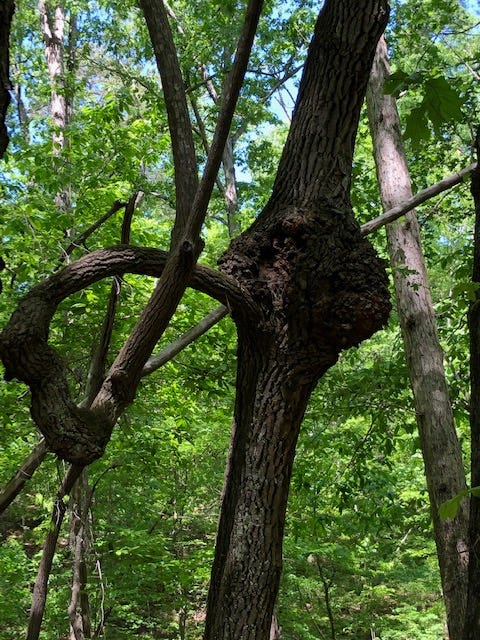
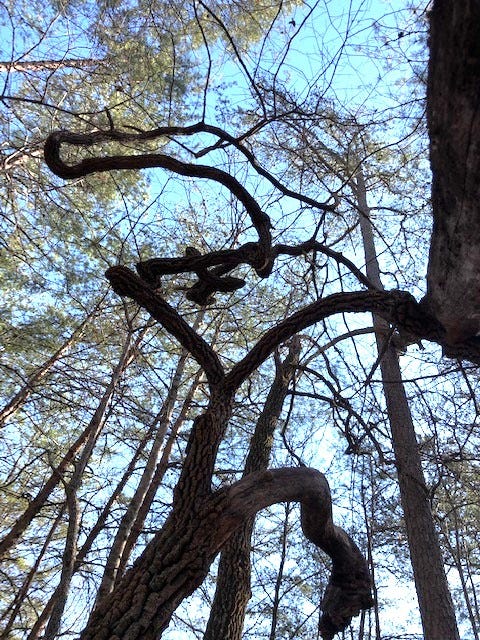
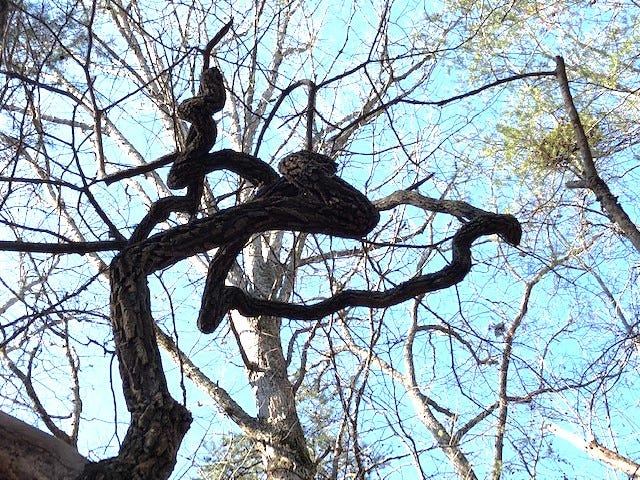
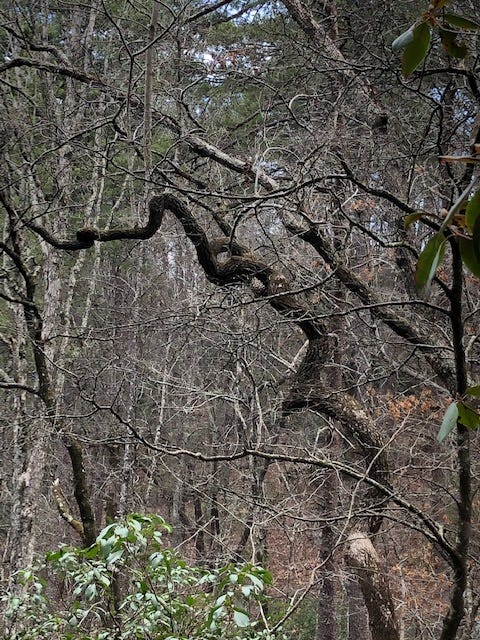
I’ve had several people send me pictures of L-shaped sourwoods thinking they’re pointer trees made by Native Americans, but sourwoods only live to 80 years old and could never be old enough to be genuine.
If the general rule of trees is to stretch upwards to the light as quickly as possible, then why are sourwoods such contortionists? Why don’t they race upwards and outwards in the same consistent way as other trees?
Why are sourwood trees so twisty?
Sourwoods are a mid-story tree, meaning they’re larger than a shrub but usually top out at 25-30 feet, far smaller than the 80-150-foot-tall poplars and oaks. (However, the record-holding sourwood is in Robbinsville, N.C., not far from my hometown, and is reported to be 118 feet tall but I can’t find any information on where in town it can be found) Because they’re on the smaller side, sourwoods have to fight for their share of sunlight. This means they tend to be leaners, reaching for sunlight pockets wherever they can be found.
But that’s not enough to explain the weird zigzagging of their branches – plenty of other trees like dogwoods and redbuds are mid-story trees that don’t get much sunlight and yet they grow straight branches into normal tree shapes.
It turns out the answer is due to an odd anomaly of sourwood branches.
Most tree branches grow out from the main trunk, with the tip of the branch growing a certain amount each growing season before stopping at the “terminal bud.” Along the branch, lateral buds form that will turn into secondary branches, but the main branch remains the main thing – next growing season, it will continue growing from the end, adding length to the branch.
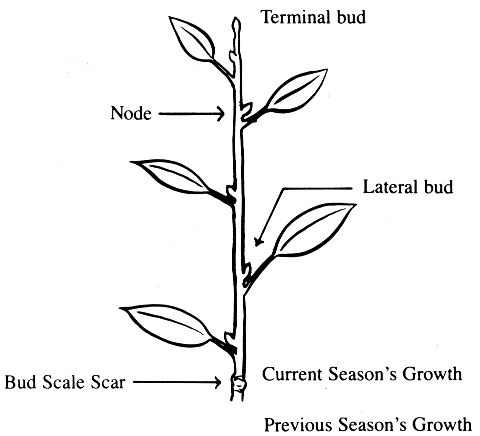
The terminal bud is in control of the growth of the branch – it sends a hormone called auxin down the branch from the tip that tells the lateral buds to limit their growth – the terminal bud is Big Man On Campus and the only one allowed to be the Main Branch.
But not with sourwoods. These trees don’t have terminal buds.
So, each growing season any one of the lateral buds can become the new main branch. With no terminal bud in charge, it’s every bud for themselves! This haphazardness leads to the branches’ zig-zaggy appearance:
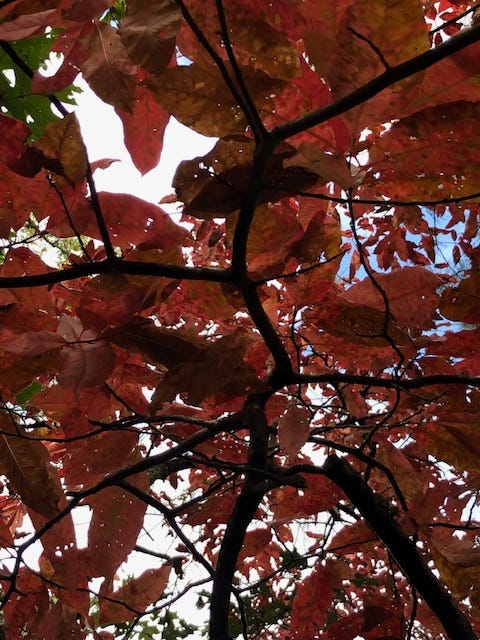
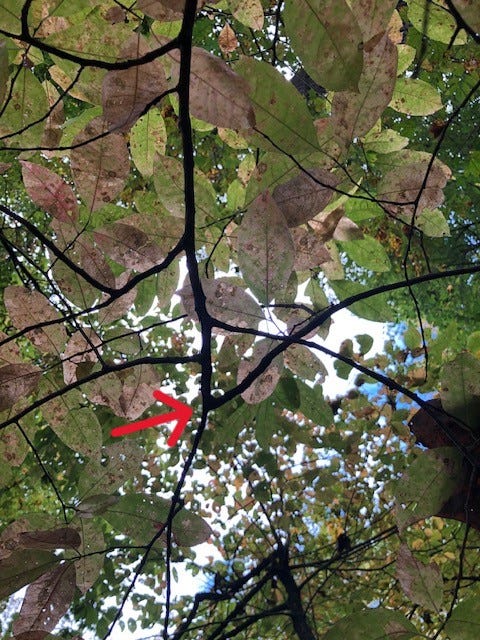
Eventually, as the tree ages, the minor branches self-prune (AKA fall off) to save energy and we’re left with the contortionist outline that makes sourwoods so unique.
So, if you live in a part of the world that includes sourwoods, enjoy not only their bright fall colors but also their whimsical indecisiveness! I like to think of them as the creative goofball characters that we all need in our lives.
A few more interesting facts:
You can tell the age of a tree limb by looking for and counting the bud scale scars (see illustration above).
Sourwood trees are named for their sour leaves – their wood presumably tastes fine. They’re also famous for the sourwood honey that bees make from their flowers. It lasts a long time because it’s slow to granulate into solid sugars.
The Cherokee used the sourwood leaves to season soup. They also used it to treat diarrhea, asthma, lung disease, and anxiety. The sap was used to treat itching.





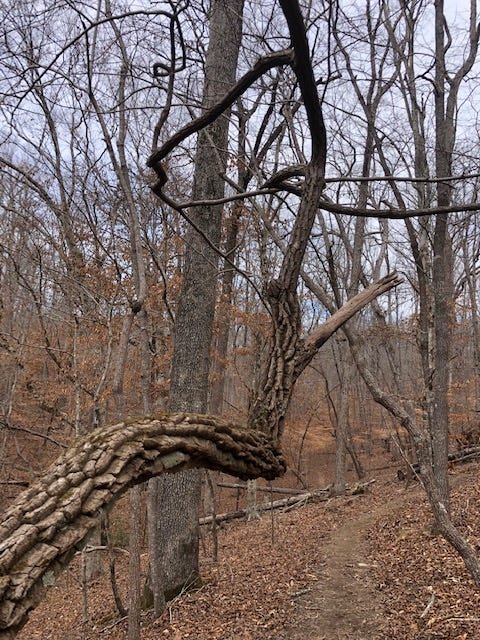

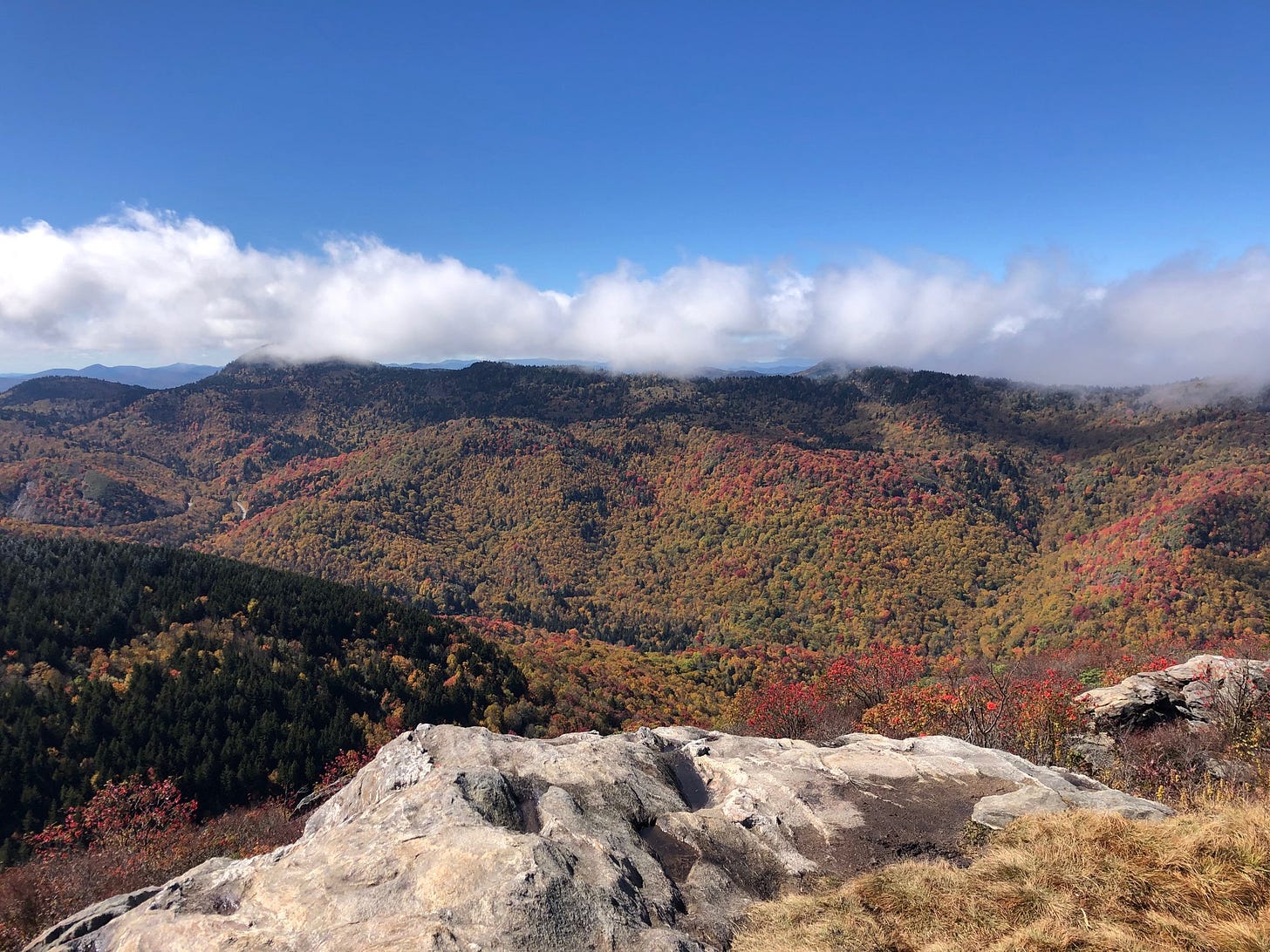
Finally I have the answer I've been looking for (and identification confirmation). We have these trees scattered throughout the forest at our property in western NC. It's rare that we see one growing straight. They turn a beautiful red in early fall, and the wood is incredibly strong (it makes sense they would have been used for tool handles and sled runners, as Heather Wall mentioned).
Why is the sky bluer in Fall? Check out Mike Snowdon's substack Everything is Amazing. I think he might have covered that question last year.